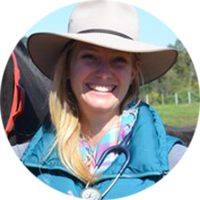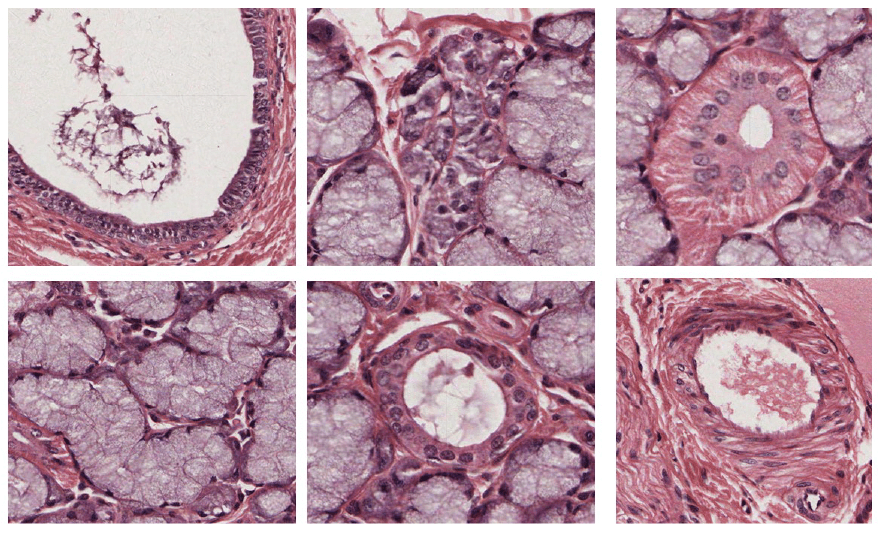Professor Elizabeth Tudor and Dr. Christina Marth use Lt’s “virtual microscope” feature to teach histology online to veterinary science students at the University of Melbourne.

Professor Elizabeth Tudor

Dr. Christina Marth
Students can find histology, the study of microscopic structures, quite challenging. Identifying a structure in a clearly laid-out illustration is one thing, but spotting that structure in a mass of gray and pink shapes in a fixed slide can be quite another.
For veterinary students, the ability to identify structures in histological slides is an important practical skill.
At the University of Melbourne, Professor Elizabeth Tudor and Dr. Christina Marth use the Lt Hotspot panel to teach histology across all of their first-year subjects.
The Hotspot Panel is a feature in Lt that gives you an easy, streamlined way to create interactive images by layering microscopic images and adding “hotspots” - or highlighted areas of interest.
This is especially valuable for teaching anatomy because it helps to make anatomical images and diagrams more interactive and engaging.
Tip #1: Make your histological materials available online
Histology is a complex subject, and students require a lot of practice to be able to confidently analyze tissue. Christina discusses how Lt has been used to teach histology online at the University of Melbourne: “We were forced to move our histology material online during COVID, and we’ve actually found that even now, when we try to have most practicals back in person, for histology, it works better to have them online.”
Having the images online in Lt means that students can access their slides anywhere - they’re not limited to lab hours. They can revisit tricky images repeatedly, and take the time they need to understand how to identify each structure.

Views of a sheep salivary gland.
Tip #2: Start with a macroscopic image and move closer
Make sure students know what they are looking at by providing spatial context. Christina recommends using a gross macroscopic image and starting histology study from there, so that students know what the wider structure looks like under the microscope. Once students understand where they are in the body, you can begin to zoom in to deeper layers in a controlled way.
Hosting the digital histology imagery in Lt lets Christina “communicate much better with the students, and the Lt platform is just such a nice way to give the students feedback so that they understand histology.”
Tip #3: Integrate histology with function
As Christina says, histology in isolation might not engage students.
“It's very hard to make histology relevant to students. And so we found that if you integrate histology with the function it becomes much more interesting to teach, but also, I think the students see the value more.”
By linking a structure to its function, the students are able to see its relevance. And similarly, if students wish to understand an organ’s function properly, they will need to know about its structure.
Related: Get 10 free high-quality anatomy images for your teaching »
Tip #4: Provide structured exercises, then allow free exploration
Elizabeth and Christina use Lt alongside a digital histology slide box. They will take a field of view from multiple layers, then provide these in a Hotspot panel in Lt. In this way, they can control the fields of view that students are looking at.
Once students are confident, then they can play around in the digital slide box themselves.
Elizabeth says: “They can work their way through [the Hotspot panel], identifying whatever they're asked to identify, and then we can direct them to the digital slide box to have their own play there. But they’ve already built confidence, because they know what they're looking for.”
“I think the Hotspot Panel is my favorite tool…it's super-suitable for histology.”
Tip #5: Provide immediate feedback
For Elizabeth, “Lt really has the capacity to build students’ confidence, particularly with histology. Students are anxious."
"I mean, it's very hard for you to see what they can see. You look down the microscope and say, ‘You see, at about 2 o'clock, you see that?’, and you think they're looking at a red cell, and they're actually looking at a whole blood vessel.”
“I think Lt has really built their confidence because they get immediate feedback. “Have I circled the right thing? Have I identified the right object?” - and they get that feedback which builds their confidence, and once they’re confident, then they're ready to learn.”
Are you curious about how you can use Lt in your teaching? Learn more about the Lt Veterinary Physiology Collection »

Professor Elizabeth Tudor
Professor Elizabeth Tudor,
Honorary Professorial Fellow,
Melbourne Veterinary School,
Faculty of Science, The University of Melbourne.
Elizabeth graduated with a PhD from Monash University and served as the Associate Dean, Curriculum Strategy in the Faculty of Veterinary and Agricultural Sciences at The University of Melbourne from 2008 until 2018.
She was instrumental in the development and accreditation of the Doctor of Veterinary Medicine at this institution, and in 2020 was honored as a Member of the Order of Australia for her services to veterinary science, higher education, and animal welfare.
Elizabeth continues to teach into the DVM at The University of Melbourne, and has received multiple teaching awards within the university and nationally.

Dr. Christina Marth
Dr Christina Marth,
Lecturer in Veterinary Biosciences,
Faculty of Science, The University of Melbourne.
Christina graduated with a PhD in veterinary science from the University of Melbourne in 2016. Christina’s teaching is focused in the preclinical years of the DVM, and she has completed multiple qualifications in teaching, including a Graduate Certificate in University Teaching.
She is currently the Chair of the Melbourne Academy for Vet. & Ag. Learning & Teaching (MAVALT).
Christina’s research interests lie in animal reproduction; she first focused on relevant immune factors in horses and now publishes research on various species.
